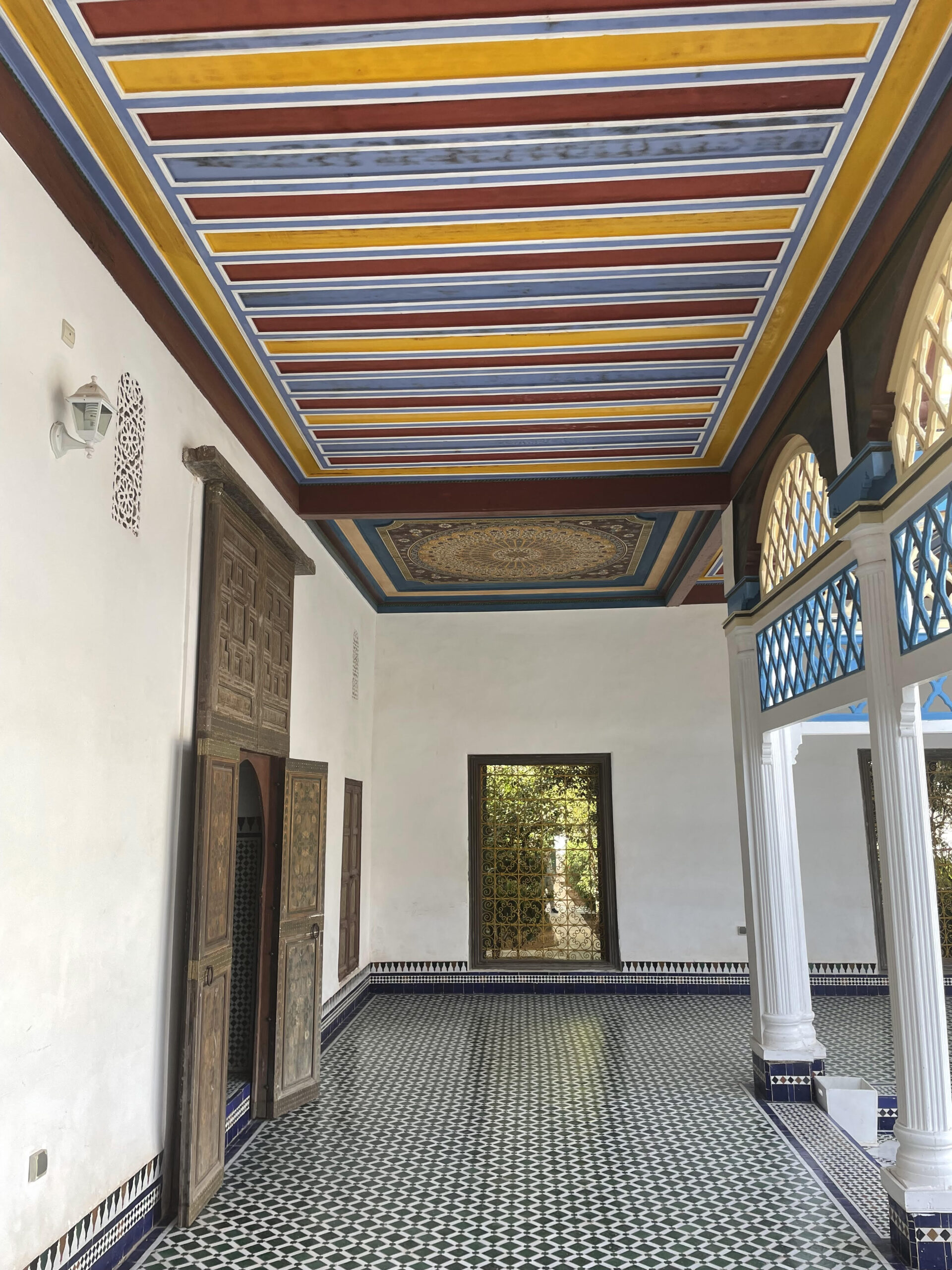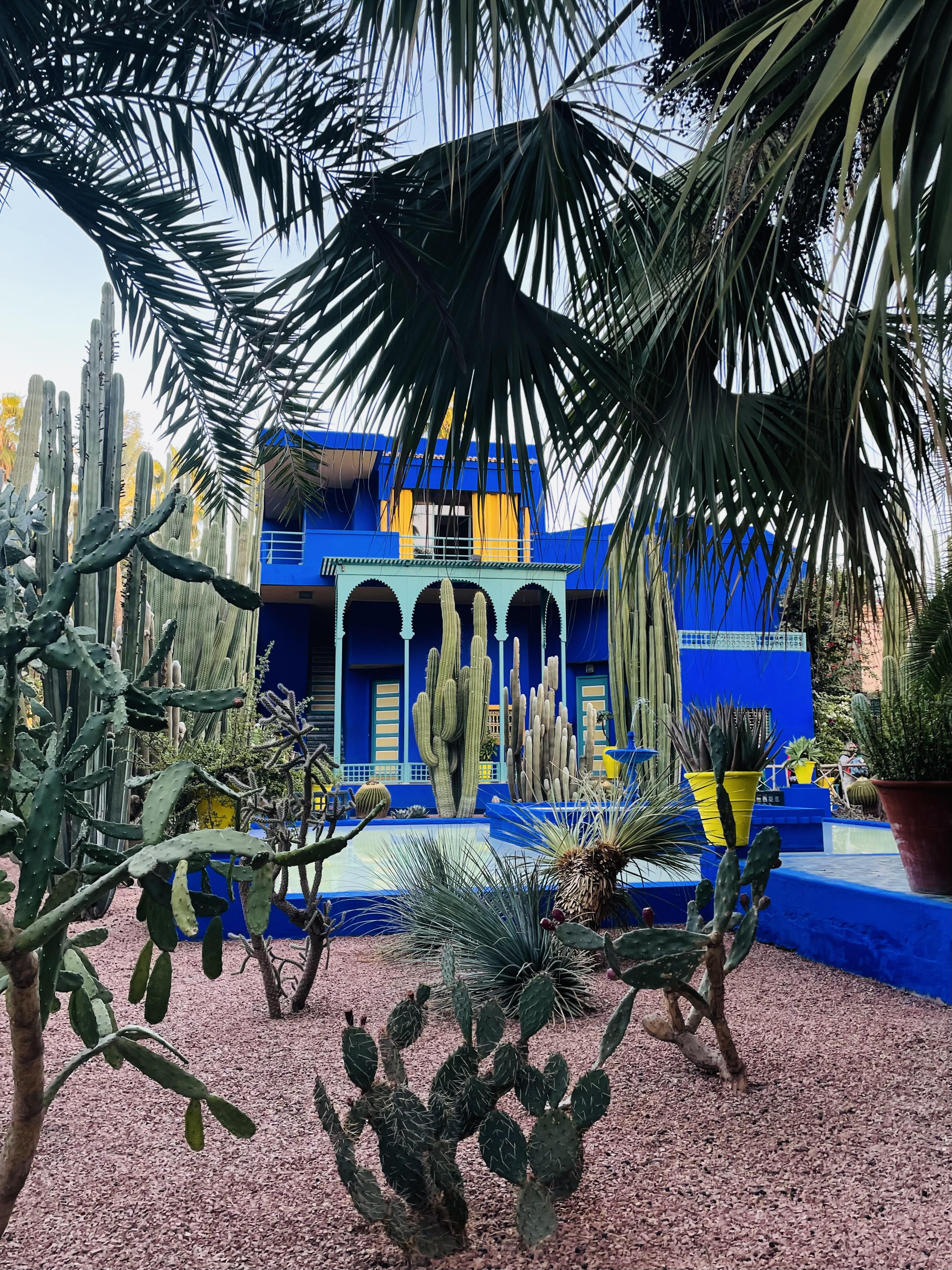
Majorelle Gardens and Bahia Palace- Morocco
(ssalamū ‘lekum) اسلا عليك�
On our second to last day in Marrakech, my mom and I decided to visit the Yves Saint Laurent Museum and the Majorelle Gardens. We had been told by many people that it was a must see experience during our stay in Morocco. This exhibition is a journey to the core of Yves Saint Laurent’s inspirations. Many of his most famous pieces were actually inspired by Marrakech. It includes iconic creations by the couturier, such as his pea coat, mondrian dress, safarijacket and tuxedo-inspired smoking. Fifty haute couture creations-rotated every ten months as required by preventive conservation-are presented around themes dear to Yves Saint Laurent: “Gardens,”A Dream of Africa,”Imaginary Journeys,” “Masculine-Feminine,”‘An Invitation to a Ball”, and “Art.” They offer an original reading of the couturier’s work by displaying pieces rarely seen by the public in a thematic conversation with selected works from the collections of the Pierre Bergé Museum of Berber Arts. It was a beautiful inside look at the fashion industry with a touch of Moroccan inspiration.
Afterwards, we visited the Bahia palace. The Bahia place was built for a woman named Bahia which happened to be Bahamad favorite wife out of all his four wives. The first foundation stone of Bahia Palace was set in 1866 AD by Abu Imran Musa bin Ahmed bin Mubarak Al Shari Al Bukhari, who was the chamberlain, minister and Grand Vizier for both Alawite Sultans Sidi Muhammad Ben Abderrahmane, 1859-1873 AD, and Al Hassan the first, 1873-1894 AD. Later on, it was expanded and decorated in the reign of the chamberlain’s son Mr. Ahmed Ben Mousa, or as he was called (Ba-Hmad), who was also the Hajib of the Sultan Al Hasan the first and Grand Vizier of the Sultan Moulay Abdelaziz, 1894-1908 AD. When Ba-Hmad passed away in 1900 AD, Bahia palace was added to the collection of the roil palaces. Then, the Grand Vizier El Madani El Glaoui built the upper floor of the palace. After that, the French Resident General, the Marshal Lyautey turned the palace into an official headquarters of the French residence general in Morocco between 1912 and 1956. When Morocco gained its independence, the palace became a roil residence for the Sultan Mohamed the fifth, then for the prince Moulay Abdellah. Later on, it was entrusted to the ministry of culture by the king Al Hassan the second as a national historical monument based on Dahir on the 21st of December in 1924.The palace occupies more than 37100m of buildings in addition of 5 hectares as green spaces and it is divided into the following parts: Dar Si Mousa: The core of the palace (1866-1878): It consists of the big external yard, or Ba-Hmad’s Agdal, the big Riad that contains two opposite and large rooms and an open courtyard and the northeastern annex that holds the grand square and its numerous amenities. The expansions of Ba Hmad “Adar Elbahia”:(1894-1900): It is the new residence that was built by Ba-Hmad for housing his family and servants, by the assistance of the Moroccan Expert Architect Al-Makki al Masfiwi, (1857- 1926), who was skillful in the Moroccan traditional handicrafts. Ba-Hmad bought all the houses and gardens around the palace so that he would be able to build the new added parts to the palace that provide the space for the small Riad and courtyard and the marble square as well as other amenities and annexes, this cost Ba-hmad approximately one million and half gold franc. Now, it is available for tourists to visit and learn about its extraordinary past and history. Visiting the Bahia palace was one of the most beautiful pieces of architecture that we saw during our time in Marrakech. It was rich in colors and everywhere you turned was picture perfect. A great experience to get to know more about Moroccan architecture.

